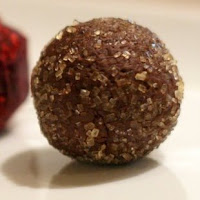In an effort to get a little more mileage out of a former Halloween costume, I decided to reuse some of the parts for an upcoming costume party. I am going to be a water-themed supervillain (since those are more fun anyway) and dig out all the spare parts left over from my awesome mermaid costume (pictured at left) from a few years previous (I actually wore the thing twice, although with a new and improved tail the second time). Being the packrat/costume designer that I am, I've always had difficulty tossing out old costumes, especially the awesome ones. I still have all the pieces, including the wig and scraps of fabric I didn't even end up using for the tail. Additionally, I have a whole pile of ocean-y colors of fabric, such as blue, purple, and green. Slap on some sequins, and we're good to go.
parts for an upcoming costume party. I am going to be a water-themed supervillain (since those are more fun anyway) and dig out all the spare parts left over from my awesome mermaid costume (pictured at left) from a few years previous (I actually wore the thing twice, although with a new and improved tail the second time). Being the packrat/costume designer that I am, I've always had difficulty tossing out old costumes, especially the awesome ones. I still have all the pieces, including the wig and scraps of fabric I didn't even end up using for the tail. Additionally, I have a whole pile of ocean-y colors of fabric, such as blue, purple, and green. Slap on some sequins, and we're good to go.
I'm starting with a corset purchased specially for this new costume (as we all know, the primary purpose of a comic book villainess is to be a busty, waspy-waisted sexual foil), although I decided the designs on it, while pretty, were just too busy for a good comic book supervillain. A comic book costume (at least the American variety) is usually composed of blocks or strips of color, instead of a richer brocade. I mean, the former is easier to draw, after all. parts for an upcoming costume party. I am going to be a water-themed supervillain (since those are more fun anyway) and dig out all the spare parts left over from my awesome mermaid costume (pictured at left) from a few years previous (I actually wore the thing twice, although with a new and improved tail the second time). Being the packrat/costume designer that I am, I've always had difficulty tossing out old costumes, especially the awesome ones. I still have all the pieces, including the wig and scraps of fabric I didn't even end up using for the tail. Additionally, I have a whole pile of ocean-y colors of fabric, such as blue, purple, and green. Slap on some sequins, and we're good to go.
parts for an upcoming costume party. I am going to be a water-themed supervillain (since those are more fun anyway) and dig out all the spare parts left over from my awesome mermaid costume (pictured at left) from a few years previous (I actually wore the thing twice, although with a new and improved tail the second time). Being the packrat/costume designer that I am, I've always had difficulty tossing out old costumes, especially the awesome ones. I still have all the pieces, including the wig and scraps of fabric I didn't even end up using for the tail. Additionally, I have a whole pile of ocean-y colors of fabric, such as blue, purple, and green. Slap on some sequins, and we're good to go.A corset cover really needs to fit the contours of the corset if it's going to look good. Just covering it in a tube of stretchy fabric will look wrinkly and hasty. And dumb. So here's how I made my tailored cover (click on any image to see a larger version):
 First, I had to replicate each section of the corset I was going to cover (I decided to cover just the front 2/3, since I'll have a cape). To replicated a corset section, lay it down on paper, tacking the first section completely flat. If there are wrinkles when you tack it down, the paper pattern will be warped and inaccurate.
First, I had to replicate each section of the corset I was going to cover (I decided to cover just the front 2/3, since I'll have a cape). To replicated a corset section, lay it down on paper, tacking the first section completely flat. If there are wrinkles when you tack it down, the paper pattern will be warped and inaccurate.If you don't have a corkboard table to tack your corset to, you can lay everything on a carpeted floor or couch cushion. This technique really works best if you can push the pin or tack all the way in, so your fabric sections can't move around.
 Once a section is tacked down securely, take a tack or pin (a pin is recommended if your fabric is prone to snagging) and punch holes along the perimeter of the garment section. (The perimeter will be wherever there is a seam or a hem). You can space these out as much as you like, but be sure to punch a hole at each corner and along the edge of curves.
Once a section is tacked down securely, take a tack or pin (a pin is recommended if your fabric is prone to snagging) and punch holes along the perimeter of the garment section. (The perimeter will be wherever there is a seam or a hem). You can space these out as much as you like, but be sure to punch a hole at each corner and along the edge of curves.




























